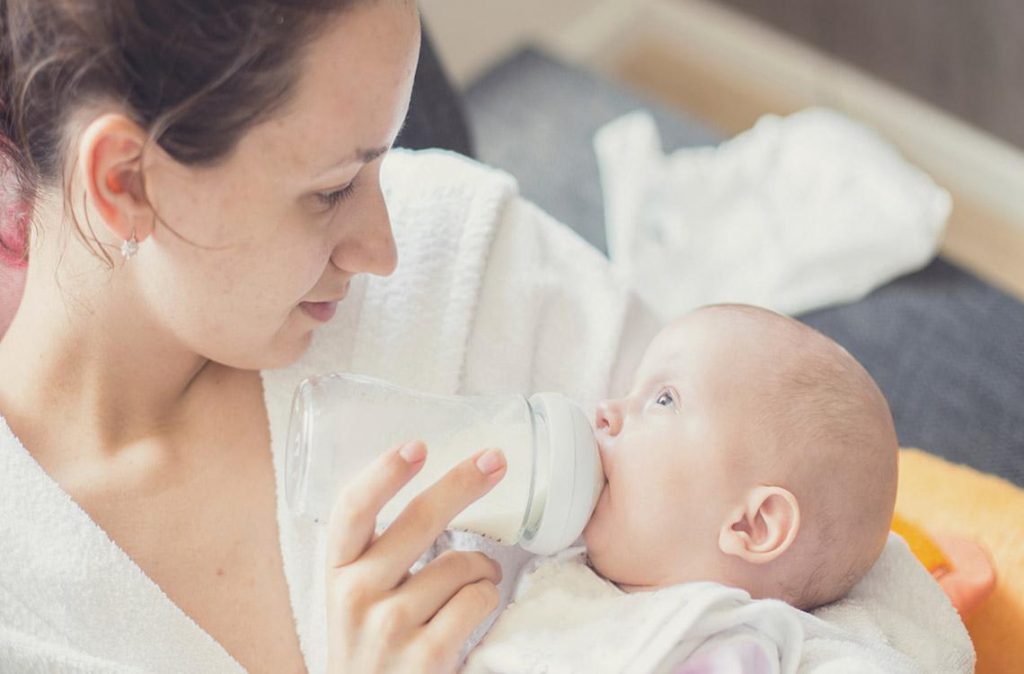Congratulations on your newborn baby! Whether you have opted out of breastfeeding due to personal choice or because you are unable to breastfeed, bottle feeding is still a viable alternative to providing your child with the best nutrients to kick-start their life. While many critics might say that breast is best, there are numerous benefits to bottle feeding as well!
How to choose the right formula?
It can be easy to feel overwhelmed when shopping in the formula aisle with the options we have today. Baby formula comes in three forms: ready-to-use, liquid concentrate, and powdered formula. Ready-to-use formula is the most convenient, with no mixing or measuring required, but costs much more and has a shorter shelf life. A liquid concentrate formula involves a mixture of water and formula but is still pricier than powdered formula. A powdered formula takes the most time to prepare but can be opened for a month.
The various formulas available are divided into cow’s milk-based formula, soy-based formula or hydrolyzed formulas (which is recommended if your baby has milk allergies or trouble absorbing nutrients). There are also special formulas for premature and low-birth-weight babies, and Human Milk Fortifier, which is used to enrich breast, milk with more nutrients. Ultimately, the choice is yours to make, with cost, convenience and your baby’s needs as the top factors for your choice.
What are the tips of bottle feeding?
1) Choose the right teat
Choosing the right teat to bottle feed your baby can be very challenging! In general, all babies are different and will prefer specific teats. If your baby is rejecting the bottle, try to check if the teat shape and size is too big or small for your baby. It’s also important to note that newborns will require a slower release teat while older children will need a fast flow teat.
Highlighted
2) Remember the shelf life of milk
Once mixed with water, formula milk has a shelf life. Any formula that has been pre-mixed and refrigerated must be disposed of within 24 hours of preparation if it has not been used. If your baby doesn’t finish a feed, only offer it again within one hour as bacteria from your baby’s mouth may have contaminated the formula hence making it unsafe to drink after.
If you are expressing breast milk, it must be refrigerated within an hour after expressing and may be stored for 48 hours in the refrigerator, or in a freezer for two weeks. It’s important to date all the bottles in the fridge to ensure you don’t accidentally feed your baby expired milk.
3) Bottle preparation
Always wash your hands before preparing formula, and always use clean and sanitized bottles and teats with each feeding. You should follow mixing directions to the tee and not alter any ratios without advice from a doctor.
4) Formula temperature
Room temperature milk is the most ideal. The simplest way to heat a bottle is to submerge it under hot water until it is a satisfactory temperature. Do not use a microwave to heat the milk as it might break down nutrients in the milk. Always test milk temperature on your wrist before feeding your baby.
5) Feeding your baby
Always remember to hold your baby in a semi-upright position when feeding. You must ensure the teat is full of milk and has no trapped air. Remember to burp your baby at the end of feeding! Posseting, or spitting up of milk can be common in young babies so be prepared.
For more motherhood tips and tricks or the best deals on baby products, visit Motherhood.com.my now!
